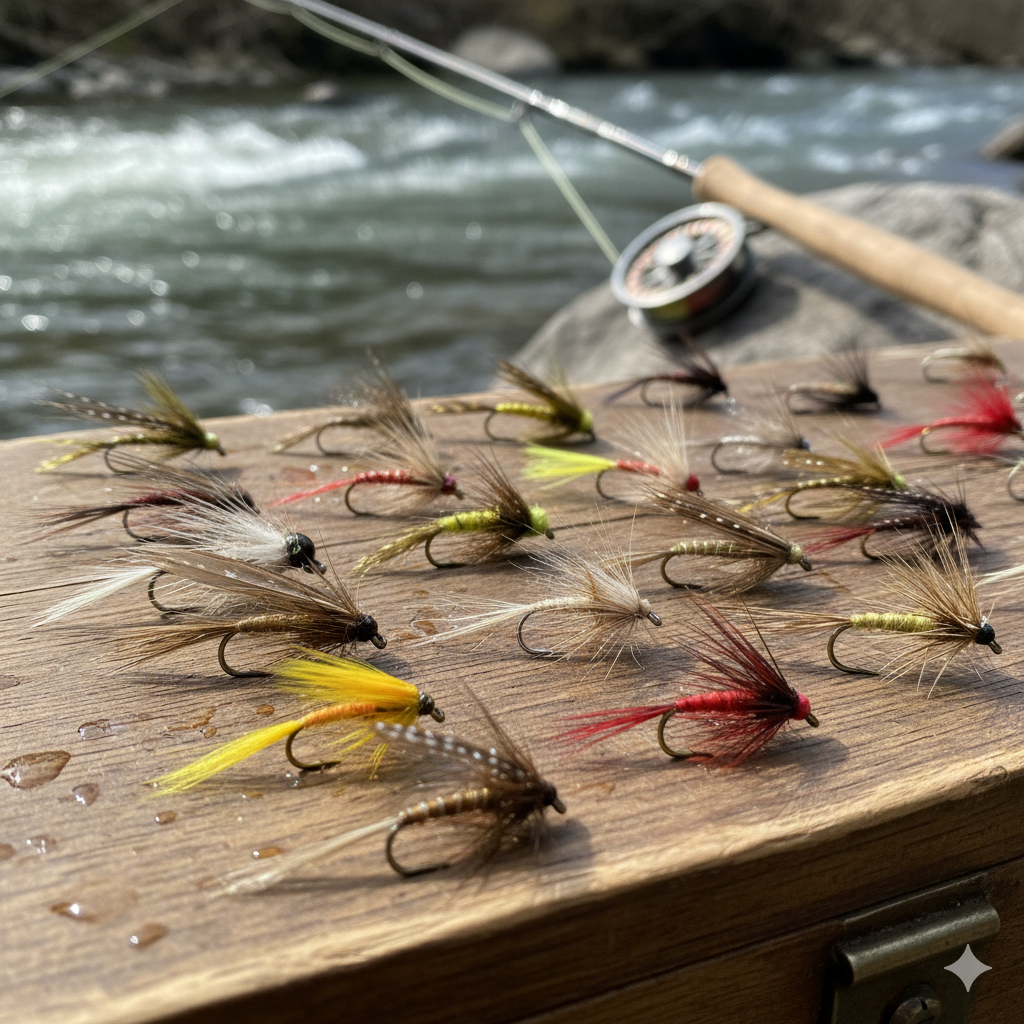Fly Fishing Flies: The Ultimate Guide for Every Angler

Fly Fishing Flies
When it comes to fly fishing flies, nothing is more important than your choice of flies.
The right fly can make or break a day on the water.
Whether you’re targeting trout in a mountain stream or bass in a local lake, understanding the different types of fly fishing flies will help you match the hatch, trigger strikes, and catch more fish.
In this guide, we’ll break down fly fishing fly types, provide a fly fishing flies chart, and highlight the best options for both trout and bass.
Types of Fly Fishing Flies
Every fly you’ll tie or buy falls into one of a few major categories:
1. Dry Flies
Float on the water’s surface.
Mimic adult insects like mayflies, caddis, or stoneflies.
Perfect for visual fishing—you see the take!
Examples: Adams, Elk Hair Caddis, Royal Wulff.
2. Nymphs
Sink below the surface and imitate insect larvae.
Fish them with strike indicators or euro-nymph setups.
Examples: Pheasant Tail, Hare’s Ear, Copper John.
3. Streamers
Represent baitfish, leeches, or crayfish.
Stripped or swung through current to trigger aggressive strikes.
Examples: Woolly Bugger, Clouser Minnow, Zonker.
4. Wet Flies & Emergers
Sit just under the surface film.
Represent insects that are hatching.
Deadly during hatch transitions.
Examples: Soft Hackle, RS2, Blue Wing Emerger.
See Our Post about fishing bait
5. Terrestrials
Land-based insects include grasshoppers, ants, and beetles.
Great in late summer when bugs are falling into streams.
Examples: Foam Hopper, Flying Ant, Beetle.
| Fly Type | Best For | Imitates | Top Species |
|---|---|---|---|
| Dry Fly | Surface feeding | Adult insects | Trout, Grayling |
| Nymph | Subsurface drift | Larvae/nymphs | Trout, Bass |
| Streamer | Active retrieves | Baitfish, leeches | Trout, Bass, Pike |
| Wet Fly/Emerger | Hatch transitions | Emerging insects | Trout |
| Terrestrial | Summer conditions | Hoppers, ants, beetles | Trout, Bass |
Trout Fly Fishing Flies
When targeting trout, focus on flies that imitate local hatches. Some essentials:
Dry: Adams, Blue Wing Olive, Elk Hair Caddis.
Nymph: Pheasant Tail, Prince Nymph, Copper John.
Streamer: Woolly Bugger, Muddler Minnow.
Trout can be selective, so always carry a mix of sizes and colors.
Fly Fishing Bass Flies
Bass are aggressive predators. Larger, flashier patterns often work best.
Topwater Flies: Poppers, Deer Hair Bass Bugs.
Subsurface: Clouser Minnow, Zonker, Crawfish Patterns.
Big Streamers: Designed to trigger reaction strikes.
Bass flies are tied with more bulk and movement than traditional trout patterns.
Get Flies Here
Fly Fishing Flies Types: Choosing the Right One
When choosing a fly, consider:
Season: Spring = nymphs; Summer = terrestrials; Fall = streamers.
Water Type: Fast riffles call for heavier nymphs; stillwater favors dries and terrestrials.
Target Species: Trout demand finesse; bass prefer bulk and action.
Final Thoughts
No matter where you fish, knowing the types of fly fishing flies will set you up for success. Start with a core selection of trout fly fishing flies if you’re a beginner, then expand into bass flies and more specialized patterns as your skills grow.
Flies are the language of fly fishing—the more fluent you become, the more fish you’ll catch.










